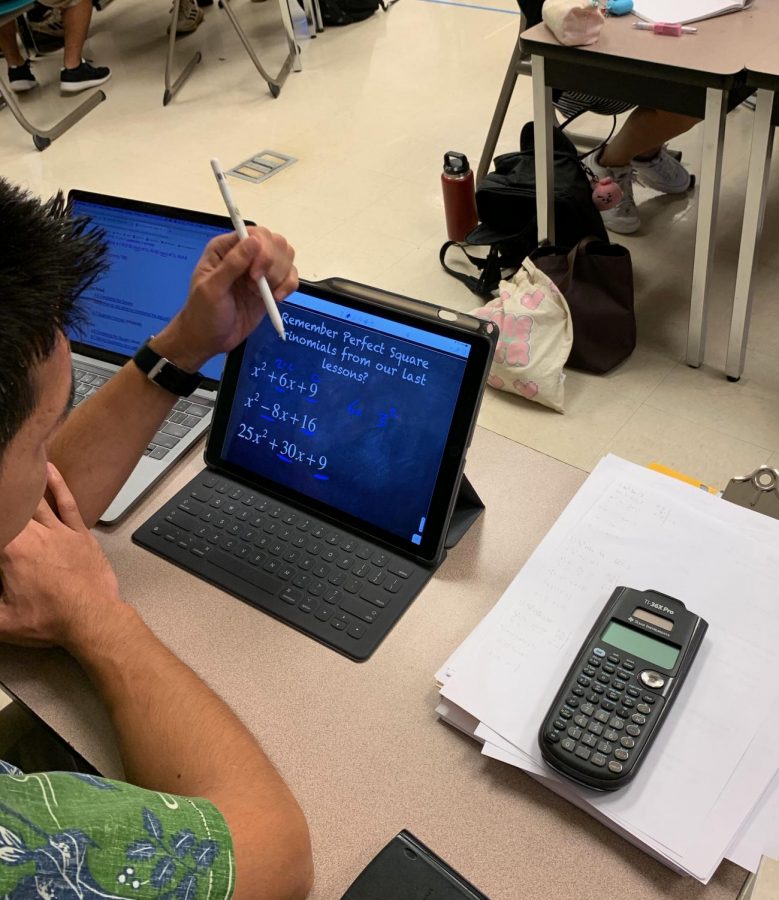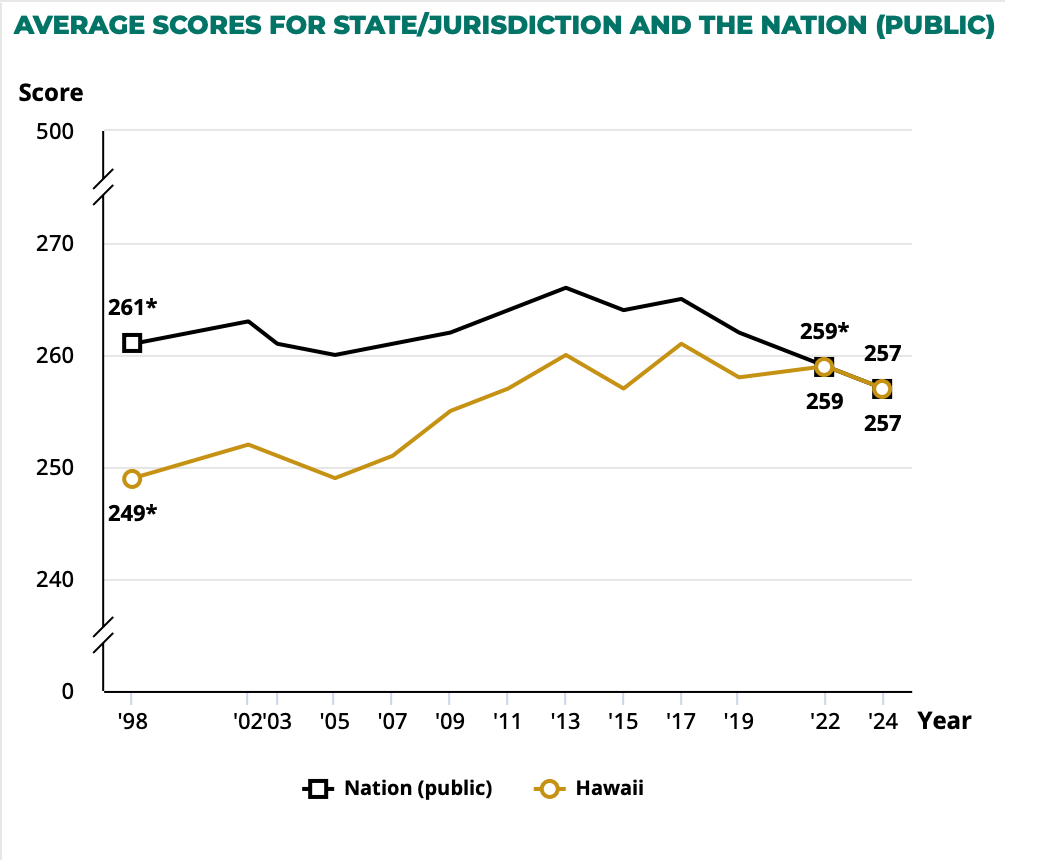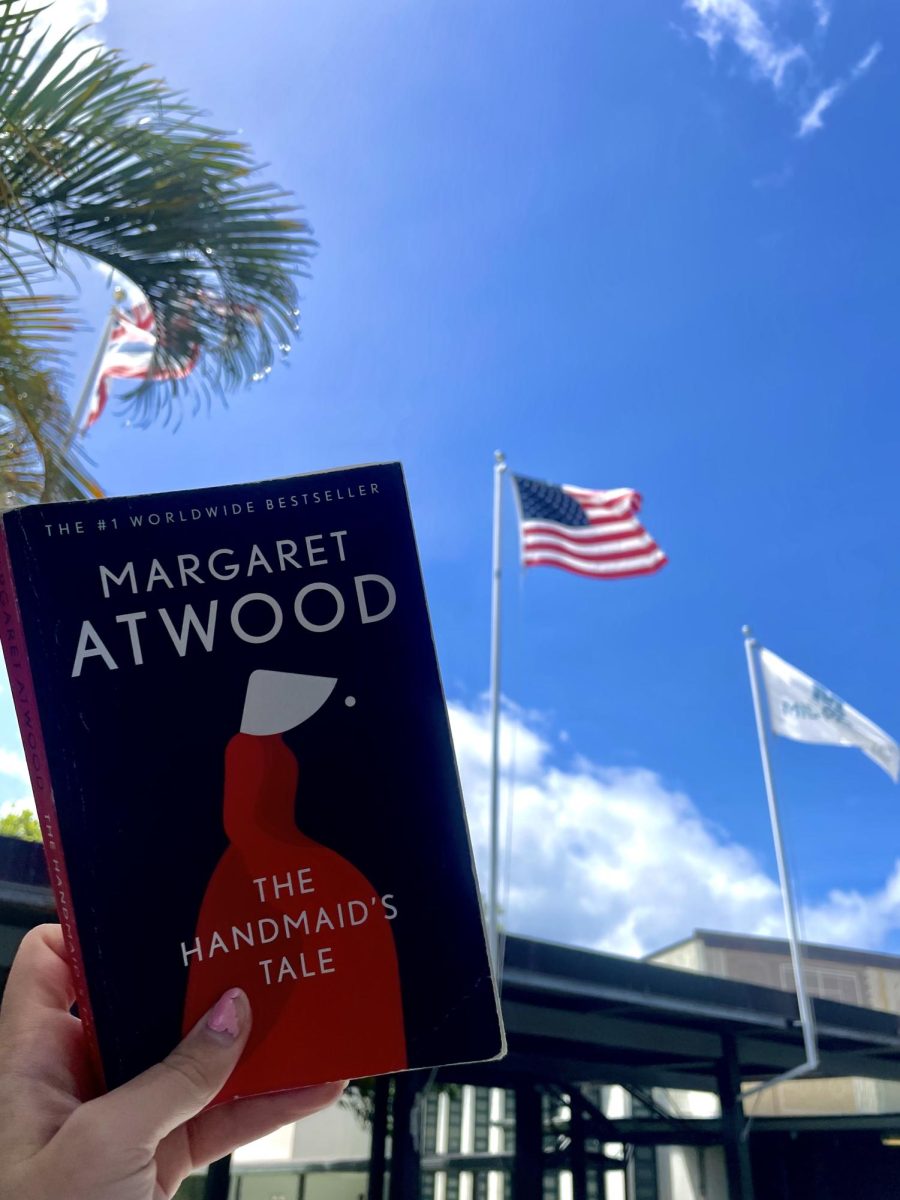Mid-Pacific goes beyond whiteboards with iPad Pros in math classrooms
Math teacher Raymond LaFleur uses his iPad Pro to help students visualize their work for math problems.
December 13, 2019
The teacher sits at the front of the class lecturing. He gestures to the example animatedly, enthusiastically explaining the quadratic formula. This scene is familiar to high school students across America, but the teacher isn’t standing in front of a chalkboard,a white board, or even a smartboard.
At Mid-Pacific, this exchange takes place entirely on an iPad.
This year the math department started a trial of the new iPad Pros, which are an upgrade from smartboards.
The use of the iPad Pro came about from unused and neglected iPads that were once part of a previous class, said Brian Grantham, the Director of Education Technology.
“We try to use our technology as much as we can, and we had an iPad Pro cart of about 12 iPads […] that didn’t have a home,” Grantham said.
The goal is for the math department to teach more through the current technology, said Grantham.
“They are one of the few departments that are hanging on to the interactive whiteboard [smartboard] because they see that as an integral part of how they teach,” said Grantham. “The iPad Pro, when it came in, and we were able to offer that to them as a trial period, to test it, then they jumped at it.”
Math Teacher Lisa Russell said the new iPad makes class easier.
“I can easily hand my iPad Pro to a student and they can write on it. It’s easier for me to write and I’m not standing in front of the board covering it.”
Use of the iPads also allow for teachers to post the examples that they use in class online for students to view and study.
“I think that there are benefits both for the student and the teacher,” said Raymond LaFleur, math teacher. Teachers can take advantage of more vibrant color available on the class television screens.
One of the things that the iPad Pro brought was Apple Pencil support, now teachers could use the slim Apple Pencil, rather than the thick and unwieldy stylus used with a smartboard.
Junior Kiana Smith said she preferred the use of regular whiteboards better.
“It causes me to actually pay attention and not go off and do other things pointing and circling and writing things in different colors; I want it to be a physical sensation … on the board kind of thing.”
This testing phase will allow the tech department to determine what kinds of new technology that the teachers will need in next school year, Grantham said.
“This gave us a perfect opportunity to put the device in the teacher’s hand, have them try it and then get the feedback from them that will determine what they need for the next round.”







